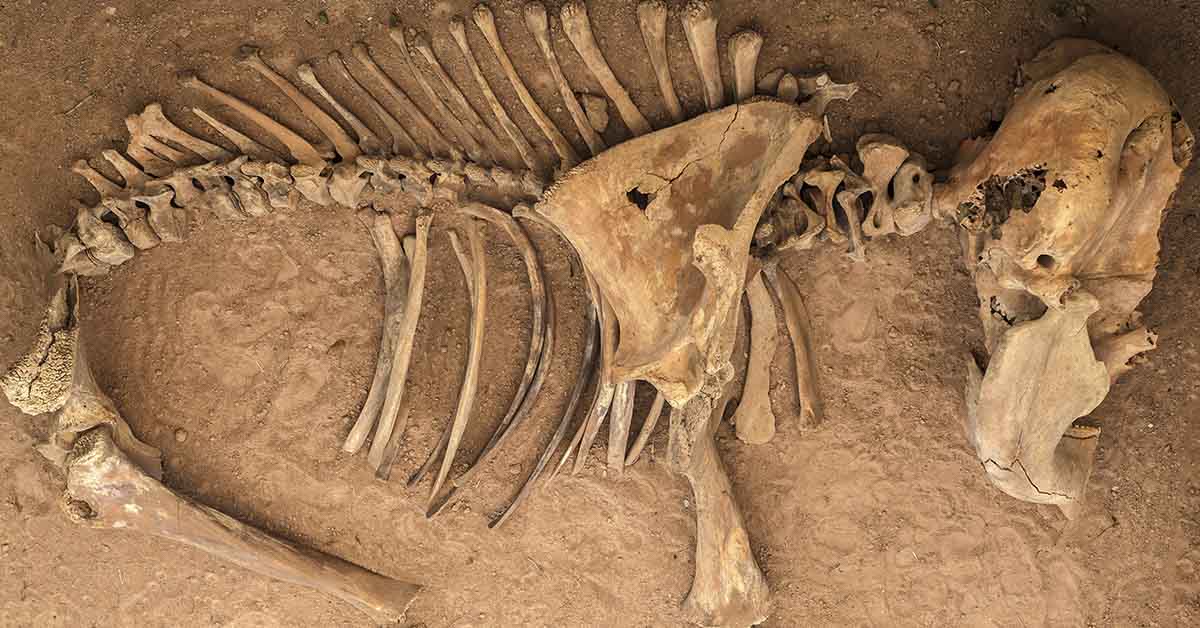Exploring the Ancient Past of Florida’s Elephant Ancestors
In the vast expanse of time, when the landscapes of North America bore witness to an array of colossal creatures, the region that is now Florida hosted a diverse array of ancient megafauna. Among these awe-inspiring inhabitants were the gomphotheres, prehistoric relatives of elephants that once roamed the land.1 In a remarkable discovery, a team of dedicated scientists and volunteers recently unearthed a treasure trove of gomphothere fossils, providing an enthralling glimpse into the prehistoric history of Florida.
Unearthing a Prehistoric Graveyard: A Once-in-a-Lifetime Find
The bones of these magnificent creatures, known as gomphotheres, were discovered in a prehistoric elephant graveyard located in northern Florida, near the city of Gainesville.2 These gomphotheres, distant relatives of modern elephants, thrived approximately five and a half million years ago, a time when a now-dried river once flowed through the region. The discovery has been hailed as a “once-in-a-lifetime find” by Jonathan Bloch, the curator of vertebrate paleontology at the Florida Museum of Natural History. He noted that the uncovered skeletons represent some of the most complete gomphothere remains from that era in Florida and rank among the finest specimens found in North America.
Gomphotheres were not confined to the Florida region; they were part of a much grander picture in Earth’s history. These magnificent creatures were part of the larger family of proboscideans, which includes both modern elephants and their extinct relatives. Unlike the elephants of today, gomphotheres roamed every corner of the globe before the advent of human presence, showcasing their remarkable adaptability and resilience. In fact, the gomphotheres found in Florida were part of one of the most diverse groups of proboscideans.
Gomphotheres: Ancient Wanderers of the World
The evolutionary journey of gomphotheres spans millions of years, dating back to the early Miocene period, around 23 million years ago. These creatures began their existence in Asia and Europe before crossing the land bridge that connected Asia to North America about 16 million years ago. Subsequently, they traversed into South America through the newly formed Isthmus of Panama approximately 13 million years later. However, despite their remarkable success over millions of years, gomphotheres eventually succumbed to the dual pressures of rapid climate change and human hunting, leading to their extinction towards the end of the last ice age.
Montbrook Fossil Dig: A Window into Ancient Florida
The remarkable gomphothere graveyard was discovered during the Montbrook Fossil Dig, a collaborative effort involving paleontologists and dedicated volunteers that commenced in 2022. What started as a routine excavation soon turned into an extraordinary find when a volunteer unearthed the fossilized foot of a massive creature. Dean Warner, a retired chemistry teacher turned fossil-hunter, described the excitement of coming across these ancient remains, leading to the subsequent discovery of several complete skeletons, including those of juveniles and an adult.
While the exact size of these prehistoric giants is yet to be determined, estimations suggest that the adult gomphothere stood around eight feet tall at the shoulders, with a skull measuring over nine feet in length, tusks included. The find also offers insight into the social dynamics of these creatures. Rachel Narducci, the collection manager of vertebrate paleontology at the Florida Museum, theorizes that the fossils’ arrangement suggests that members of one or more herds may have been trapped in the area at different times, possibly due to environmental factors.
The Montbrook gomphothere graveyard is more than just a collection of bones; it’s a portal into an ancient ecosystem that existed millions of years ago. The fossil beds provide evidence of a bygone era when Florida was closer to the sea, and the late Miocene period was characterized by higher temperatures and elevated sea levels. The remnants of various creatures, from land-dwelling camels and rhinoceroses to marine species like sharks, tell the tale of an intricate ecological web. This riverine ecosystem, now vanished, was home to diverse life forms, and the discovery of the gomphothere skeletons offers scientists a unique opportunity to piece together this intricate puzzle.
A Vision for the Future: Sharing the Past
As the excavation and research continue, the significance of the Montbrook gomphothere site grows. Beyond its scientific value, the discovery is an opportunity to engage the public and inspire awe for the ancient wonders that once inhabited the land. Jonathan Bloch envisions the assembly of the gomphothere skeleton for public display, allowing it to stand alongside other iconic prehistoric creatures at the Florida Museum of Natural History. This endeavor not only sheds light on the ancient past but also emphasizes the importance of collaborative efforts between scientists and volunteers in uncovering the mysteries of our planet’s history.
In conclusion, the recent discovery of a prehistoric elephant graveyard in Florida unveils a captivating chapter in the region’s history. Gomphotheres, distant relatives of modern elephants, once roamed the land, leaving behind traces of their existence that now captivate the imagination of scientists and enthusiasts alike. Through the dedicated work of paleontologists and volunteers, the Montbrook Fossil Dig has provided a window into an ancient world, showcasing the resilience and diversity of these magnificent creatures. As these fossils are meticulously studied and put on display, they remind us of the intricate and awe-inspiring tapestry of life that has graced our planet over millions of years.
Sources
- “Elephants once roamed Florida—and scientists just stumbled on a graveyard full of them.” Pop Sci. Laura Baisas. June 2, 2023.
- “Scientists Discover 5.5- Million- Year-Old ‘Elephant Graveyard’. Times Now News. Krishna Kakani. June 4, 2023.

